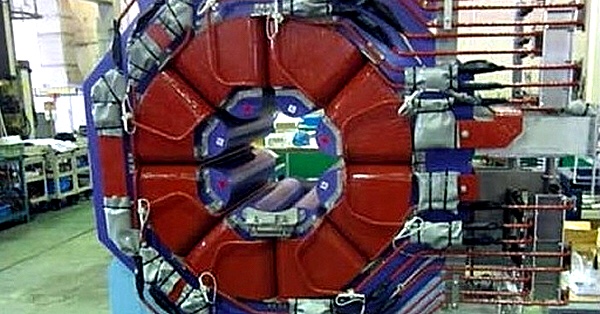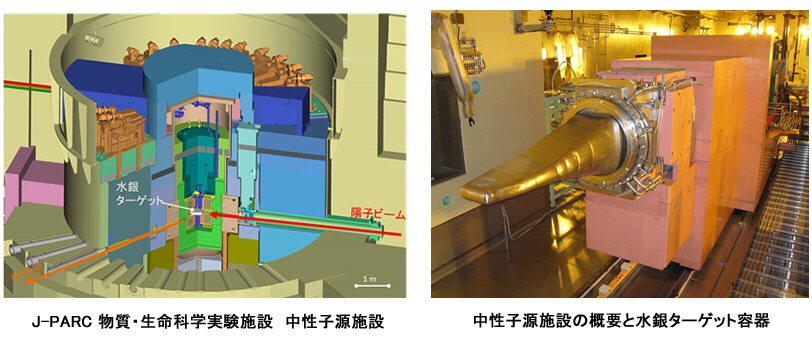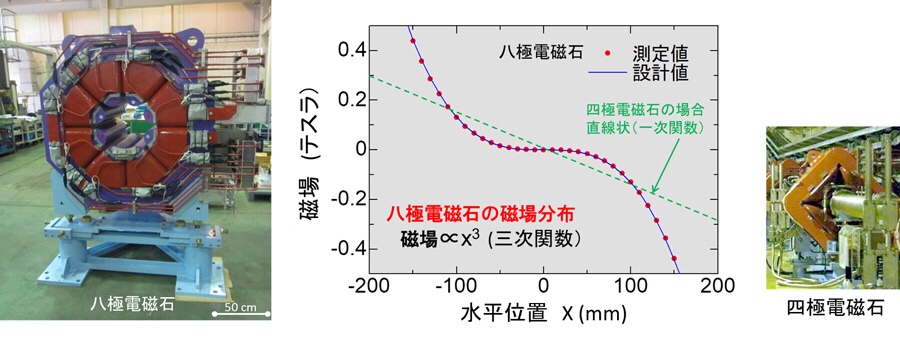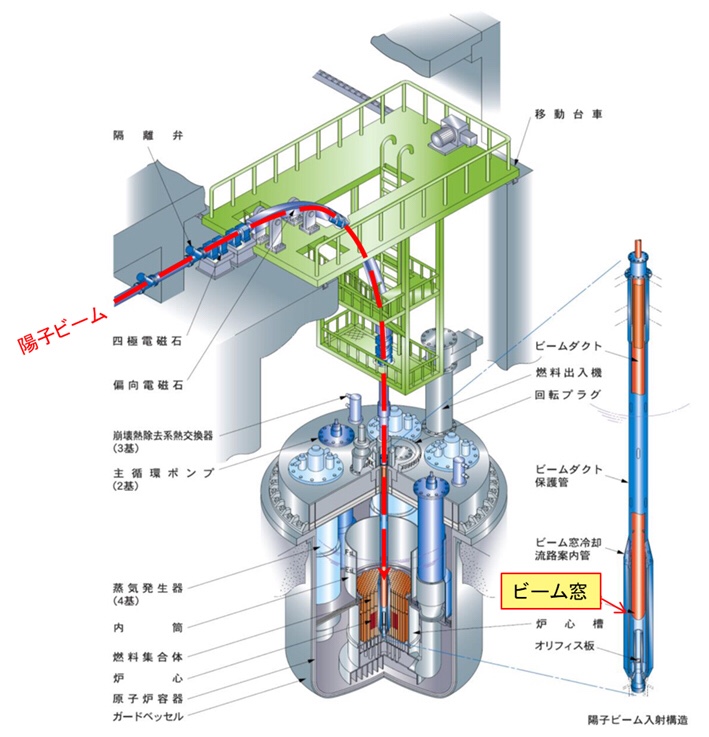

图1八极电磁体用于波束成形(左)及其磁场分布(中心)。四极电磁体(如右图)具有会聚/发散功能,类似于用于通过加速器传输光束的光学透镜,具有线性(一阶函数)磁场分布,并且光束宽度可以改变,但形状是我不能改变另一方面,具有八个磁极的八极电磁铁具有三次方的磁场分布,并且随着距电磁铁中心的距离增加,磁场变得更强。由于该特性(非线性),可以仅绕梁的脚进行卷积,并使梁的形状平坦。

图2通过束整形降低电流密度的方法的概念图。使用线性光学器件,不能改变光束形状,但是使用非线性光学器件,可以使光束形状平坦,并且可以减小中心的电流密度,而不会将光束击中目标外部的结构材料。我能做到。

图6加速器驱动系统概述
J-PARC:质子束整形技术开发:高强度加速器的安全运行
-充分利用非线性光学的光束整形方法减少了目标的损坏,有助于设施的安全运行-
J-PARC:
[介绍摘要]
在中子源设施中,目标钢制容器暴露于高强度质子束中。
即使在J-PARC的中子源设施中,钢制容器也总是会受到光束的损坏。
常规光束调节技术:
在中子源设施中,有必要降低电子束的电流密度以减少损害。
传统的光束调节技术无法改变光束形状。
因此,难以降低电流密度。
用八极电磁铁进行光束整形:
早就知道八极电磁铁可用于将光束整形为扁平形状并降低电流密度。
但是,这种整形方法被认为难以调节诸如磁场之类的参数,因此难以将其用于高强度光束。
这种光束整形技术:
在这项研究中,我们将详细分析这种波束成形方法。
结果,澄清了光束形状仅由两个参数表征。
光束整形现在更加容易。
按预期形状对光束进行整形:
当我实际尝试这种波束成形方法时,
您可以按预期的方式调整光束的形状,
光束的电流密度可以降低30%。
高强度加速器设备的重要技术
随着这种束整形技术的发展,J-PARC中子源设施已经能够运行更稳定,强度更高的束。
该结果是抑制未来的高强度加速器设备中的目标损伤的重要技术。
日本原子能机构:新闻稿
https://www.jaea.go.jp/02/press2020/p20072202/
Phys. Rev. Accel. Beams 23, 062802 (2020) –
Two-parameter model for optimizing target beam distribution with an octupole magnet
Shin-ichiro Meigo, Motoki Ooi, and Hiroshi Fujimori
Phys. Rev. Accel. Beams 23, 062802 – Published 23 June 2020
ABSTRACT
As hadron accelerators achieve increasing beam power, damage to targets is becoming increasingly severe.
To mitigate this damage,
nonlinear beam optics based on octupole magnets is attractive.
Nonlinear optics
can decrease the beam-focusing hazard due to failure of the rastering magnet.
As a side effect of nonlinear optics,
the beam size at the tail is known to expand drastically compared with linear optics, owing to defocusing in the nonlinear case;
this may cause severe beam loss downstream of the octupole magnets.
Beam shape and beam loss as a side effect of nonlinear optics have thus far been studied via a simplified filament model
that ignores beam-divergence spread at the octupole magnet, so that the problem may be treated by a simplified transfer matrix.
Several beam-tracking studies
have been performed for the specified case given by the specified emittance and Twiss parameters, whereas a simplified model is required for application to the pragmatic beam tuning.
In this study, a new generalized model
is proposed for application to an octupole magnet, regardless of the filament-model approximation.
It is found that the transverse distribution obtained by beam tracking can be specified by the introduction of only two parameters, namely the normalized octupole strength of
K∗8 and the cotϕ
of the phase advance from the octupole to the arbitrary position.
With the new generalized model, the distribution with allowable beam loss is studied in detail.
https://journals.aps.org/prab/abstract/10.1103/PhysRevAccelBeams.23.062802